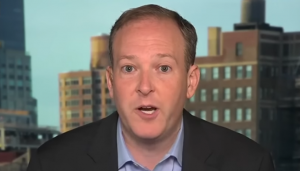Stocks ticked lower in morning trading on Wall Street
Wednesday following the market’s worst day in two years amid concerns about
higher interest rates and the recession they could create.
The S&P 500 fell 4.60 points or 0.12% as of 10:32 am
Eastern time. The Dow Jones Industrial Average fell 56.23 points or 0.18% to
31,169.74. The Nasdaq fell 5.83 points or 0.05% to 11,627.74.
Energy stocks made some of the biggest gains as US crude
oil prices jumped 2.2%. Exxon Mobil gained 2.6%.
Also Read | Are guns allowed inside Northwestern University?
Bond yields remained relatively stable after increasing on
Tuesday. The yield on the two-year Treasury rose 3.79% from 3.75% late Tuesday
when it surged on expectations for more aggressive interest rate hikes by the
Federal Reserve.
The yield on the 10-year Treasury, which helps determine
where mortgages and rates for other loans are heading, increased to 3.43% from
3.41%.
Also Read | Twitter whistleblower Peiter Zatko testified before US Congress: What he said
Inflation at the wholesale level showed prices are still
rising sharply, with pressures building underneath the surface, even if overall
inflation eased. It followed a report on inflation at the consumer level, which
raised expectations for interest rate hikes and triggered a panic in markets.
Traders now expect the Fed to raise its benchmark rate by a
full percentage point next week, which is four times the usual move. The Fed
has already hiked its benchmark interest rate four times this year, with the
last two hikes by 0.75 percentage points.
Also Read | Global markets react to higher than expected US inflation data
The central bank is taking an aggressive stance on interest
rates to try and control the hottest inflation in four decades. Tuesday’s
report on high prices bumped the market with indications that inflation is
entering a more stubborn phase that could require an already resolute Fed to
become more aggressive.
Markets are concerned that if the Fed raises the rates too
high or too quickly it could put the economy into a recession. The Fed is
trying to avoid that outcome, but the latest inflation reports show that is
becoming a more difficult task.
Also Read | US inflation rate eases slightly | A timeline: 1930-2022
The broader US economy has been slowing, but consumers have
remained resilient and the job market remains strong. Wall Street will get
another report on inflation’s latest impact on spending when the government
releases its retail sales report for August on Thursday.
The market is also watching US-China tensions and the
Russia-Ukraine war, while businesses and government officials are expecting a
nationwide rail strike at the end of this week that could paralyze an already
disrupted supply chain.
Also Read | Why the Blue Origin rocket New Shepard NS 23 launch failed
The railroads have already started to cut shipments of
hazardous materials. They have announced plans to stop hauling refrigerated
products ahead of Friday’s strike deadline. Businesses that depend on Norfolk
Southern, Union Pacific, BNSF, CSX, Kansas City Southern, and other railroads
to deliver their raw materials and finished products are preparing for the
worst. Biden administration officials are struggling to build a plan to keep
goods moving if the railroads shut down.






